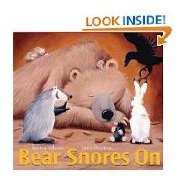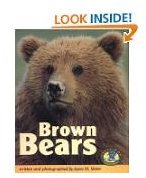Send Your Elementary Students on a Bear Webquest - Featuring Polar Bears and Brown Bears
What Bears Do Young Students Know?
Gather your students together and tell them that you are going to embark on an exciting adventure. Explain that they are going to be
researchers in the world of bears. You are taking them on a journey into science, and you are also teaching them how to conduct research via a webquest.
Begin with a literature link to launch the project:
-
Brown Bears by Lynn M. Stone is a factual book telling about the bears in Alaska.
-
A Polar Bear Journey by Debbie S. Miller is a beautifully illustrated book telling of a Polar Bear and her two cubs.
The Task
-
We are going to be scientific explorers. Let’s make a list of the bears we know: This will likely include Corduroy, the Berenstain Bears, and so forth.
-
After the list is complete go through it with the students and pick out all the real bears. Explain to the students that to do a good job we need to choose two bears to research, so today we are going to find out about Polar Bears and Brown Bears.
-
Make a chart titled: This is what we know about Brown Bears and Polar Bears.
-
Provide a list of questions that the students will find useful in their webquest:
What does the word ‘hibernate’ mean?
Where do Polar Bears live?
Where do Brown Bears live?
What do Polar Bears eat?
What do Brown Bears eat?
What are the characteristics of a Polar Bear? How big is it? What does it look like? Draw a picture.
What are the characteristics of a Brown Bear? How big is it? What does it look like? Draw a picture.
Are either of these bear species endangered? Why?
Process
Divide the class into small groups and give each group a question to research. Schedule computer time and have on hand books,

magazines, paper, pencils, crayons and markers.
Books:
-
Bear Snores On by Karma Wilson. This is an excellent choice to find out about hibernation and habitat.
-
The Polar Bear Son by Lydia Dabcovich
Suggested Internet Sites:
www.polarbearsinternational.org
Bears Information (sound effects too!)
Evaluation
Invite each group to present its findings. The students should report on the question they were researching, the information they found, and the resources used. After reviewing the students’ reports consider if the questions were answered adequately and if the students worked well as a group. Add the research to the original chart and ask the students if they think that the answers are complete. Do they need to do further research?
Wrapping It Up
On a map of North America color in sections where the Polar Bears and Brown Bears live.
Divide large sheets of paper into quarters. In section one: Draw a picture of bears coming out of their den. In section two: Draw a picture of a Mother bear with her cubs teaching them to find food. In section three: Draw the bears eating lots of food to build up their fat. In section four: Draw the bears asleep in their dens.
Hold a “Riddle Competition:” Invite students to make up riddles about Polar Bears and Brown Bears.
- For example, “I live near the North Pole - what kind of bear am I?” (Polar Bear) “I look like a teddy bear - what kind of bear am I?” (Brown Bear)
As a treat enjoy Teddy Grahams and scoops of ‘snow’ (vanilla ice cream).
References
- Author’s own classroom experiences
